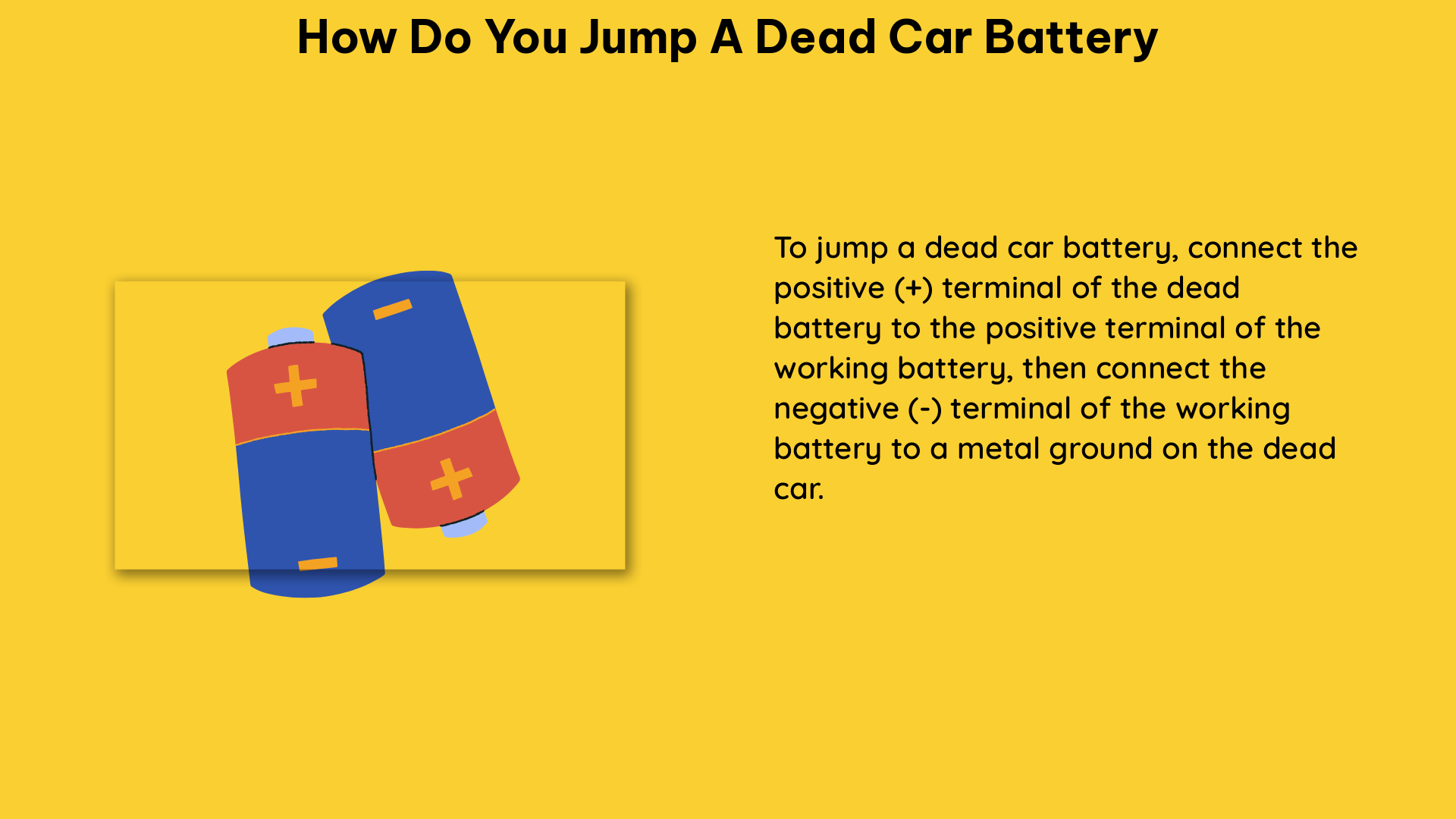Jump-starting a car with a dead battery is a common occurrence, and it’s essential to know the proper steps to ensure safety and prevent damage to the vehicles. This comprehensive guide will walk you through the process of jump-starting a dead car battery, providing detailed instructions and technical information to help you get your vehicle back on the road.
Preparing for the Jump-Start
Before you begin the jump-start process, there are a few important steps to take:
-
Park the Vehicles: Position the two vehicles close enough to each other to allow the jumper cables to reach the batteries, but not so close that they are touching. Ensure that both vehicles are turned off and the parking brakes are engaged.
-
Locate the Batteries: Open the hoods of both vehicles and locate the batteries. The positive (red) and negative (black) terminals should be clearly visible.
-
Check the Battery Condition: Inspect the battery for any signs of damage, such as cracks, leaks, or corrosion. If the battery appears to be in poor condition, it’s best not to attempt a jump-start, as it could be unsafe or ineffective.
-
Gather the Jumper Cables: Ensure that you have a set of high-quality jumper cables with thick, insulated wires and sturdy clamps. The cables should be at least 6 feet long to allow for proper connection.
Connecting the Jumper Cables

-
Connect the Positive (Red) Cable: Attach the positive (red) jumper cable to the positive (red) terminal of the dead battery. Make sure the clamp is firmly in contact with the terminal.
-
Connect the Negative (Black) Cable: Attach the negative (black) jumper cable to the negative (black) terminal of the assisting battery.
-
Ground the Negative (Black) Cable: Connect the other end of the negative (black) jumper cable to an unpainted metal surface on the disabled vehicle, such as a bolt or the engine block. Avoid connecting it directly to the negative battery terminal, as this can cause sparks.
-
Ensure Proper Connection: Double-check that all the jumper cable connections are secure and that the clamps are not touching each other or any other metal parts.
Starting the Vehicles
-
Start the Assisting Vehicle: Start the engine of the vehicle with the good battery and let it run for a few minutes to allow the battery to charge the dead battery.
-
Start the Disabled Vehicle: After a few minutes, try to start the engine of the disabled vehicle. If it doesn’t start immediately, let the assisting vehicle run for an additional minute or two before trying again.
-
Run the Vehicles Connected: Once the disabled vehicle’s engine is running, let both vehicles run with the jumper cables connected for about 3-5 minutes. This will help charge the dead battery.
-
Disconnect the Jumper Cables: After the vehicles have run connected for the recommended time, disconnect the jumper cables in the reverse order: first the negative (black) cable from the disabled vehicle, then the negative (black) cable from the assisting vehicle, followed by the positive (red) cable from the assisting vehicle, and finally the positive (red) cable from the disabled vehicle.
Maintaining the Charged Battery
-
Let the Disabled Vehicle Run: After the jump-start, let the disabled vehicle run for at least 30 minutes to allow the battery to fully recharge. Avoid turning off the engine during this time.
-
Monitor the Battery: Keep an eye on the battery’s charge level and consider having it tested if the vehicle has trouble starting again in the future. A battery that requires frequent jump-starts may need to be replaced.
-
Avoid Excessive Idling: Excessive idling can drain the battery, so try to avoid letting the vehicle run for long periods without driving.
-
Consider a Battery Charger: If you frequently experience dead batteries, investing in a portable battery charger can be a useful tool to have on hand.
Additional Tips and Considerations
-
Safety First: Always wear safety glasses and avoid leaning over the battery during the jump-start process. Keep sparks and flames away from the battery, as it can produce flammable hydrogen gas.
-
Avoid Touching the Clamps: Be careful not to let the positive and negative jumper cable clamps touch each other or any metal parts, as this can cause sparks and damage the electrical system.
-
Check the Battery Terminals: Ensure that the battery terminals are clean and free of corrosion, as this can interfere with the jump-start process.
-
Frozen or Damaged Batteries: Do not attempt to jump-start a frozen or severely damaged battery, as it can be unsafe and ineffective.
By following these detailed instructions and technical guidelines, you can safely and effectively jump-start a dead car battery and get your vehicle back on the road. Remember to always prioritize safety and consult a professional mechanic if you have any doubts or concerns.
Reference:
- BatteriesPlus How to Jump-Start Your Car in Five Simple Steps
- How to Save a Dead Car by Jump Starting the Battery – I Drive Safely
- How to Jump Start a Battery – Quick Lane® Tire & Auto Center
- How to Jump-Start a Car With a Dead Battery – Consumer Reports
- Know how to jump a dead battery correctly. It’s NOT just red … – Reddit

The lambdageeks.com Core SME Team is a group of experienced subject matter experts from diverse scientific and technical fields including Physics, Chemistry, Technology,Electronics & Electrical Engineering, Automotive, Mechanical Engineering. Our team collaborates to create high-quality, well-researched articles on a wide range of science and technology topics for the lambdageeks.com website.
All Our Senior SME are having more than 7 Years of experience in the respective fields . They are either Working Industry Professionals or assocaited With different Universities. Refer Our Authors Page to get to know About our Core SMEs.